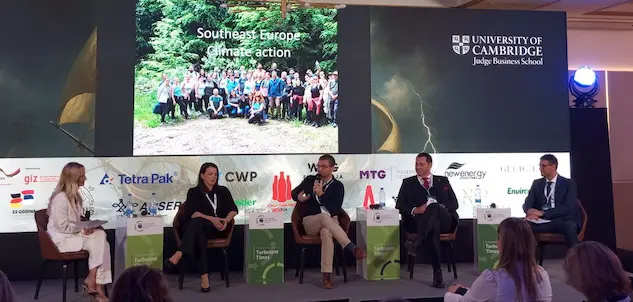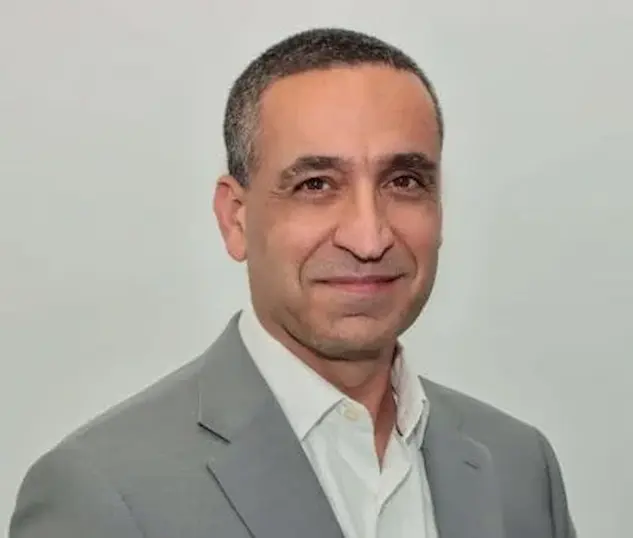Across the globe, cities are seeking new ways to strike a balance between ecological integrity, economic growth, and social well-being. Traditional planning models, focused on control and expansion, are increasingly inadequate in the face of complex, interconnected crises. Real intelligence isn’t control but adaptation. A city, like a mind, must learn to sense, respond, and evolve. Systemic intelligence and urban renewal are not plans or policies; they’re states of awareness. They remind us that cities aren’t machines to be engineered, but living systems to be understood.
Vlorë, Albania: rethinking the coastline through systemic intelligence
In Vlorë, where the Adriatic meets the Ionian, land and sea are learning to coexist again. The city once grew in a single line along the coast, chasing expansion yet losing connection. Now it faces the familiar paradox of progress: more tourism, less coherence; more construction, less life. But every imbalance is also information. It faces challenges at the intersection of climate change, economic pressure, and social transformation: issues deepened by rapid urbanization and increasingly fragile ecosystems.
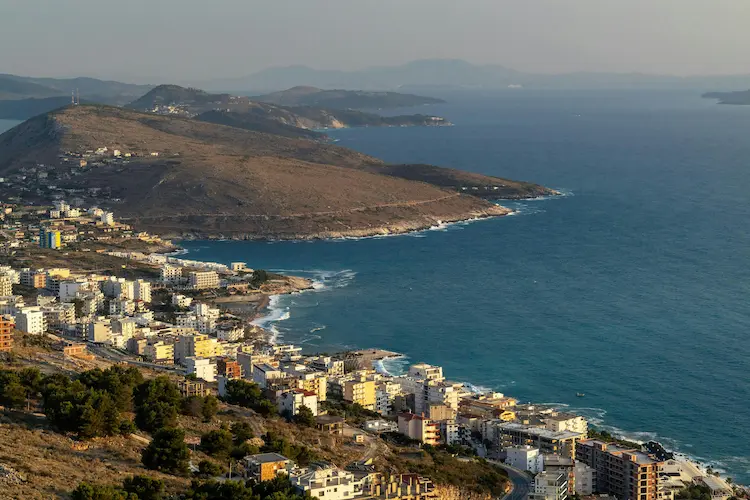
Within the Vlore 2030 Strategic Plan, and through the collaboration of the Municipalities of Milan and Vlore, Politecnico di Milano’s IMM Design Lab, CELIM, and EcoSpectrals, the city is becoming a living experiment in regeneration. Data, design, and ecology are coming together to create a new intelligence of place, where blue and green infrastructure form the city’s nervous system, connecting mobility, biodiversity, and community into a single, continuous flow.
In this context, the Vlore 2030 strategic plan in Albania stands out as a model for harnessing data-driven methodologies and nature-based solutions (NbS) to catalyze a resilient, adaptive urban future. Here, design is not decoration, but diagnosis & a dialogue with the living systems that sustain urban life.
From data to design intelligence
The Integrated Modification Methodology (IMM), developed at Politecnico di Milano’s IMM Design Lab, provided a systemic framework for transforming Vlore as a complex adaptive system. Through its multi-stage process: Investigation, Formulation, Modification, Retrofitting, and Optimization, it integrated data-driven analysis with spatial design intelligence.
The process identified Catalysts (key leverage systems) guided by Design Ordering Principles (DOPs) that align urban functions, such as mobility, ecology, energy, and functions with human dimensions of culture, community, and design.
Through this framework, the Integrated Modification Methodology (IMM) translated interdependencies into measurable and designable actions, giving form to the vision of UN Sustainable Development Goal 11: Sustainable Cities and Communities. Building on this foundation, Ecospectrals extended the method’s reach into lived reality, aligning the human and institutional dimensions to turn global sustainability goals into local, place-specific strategies for resilience, inclusivity, and ecological regeneration.
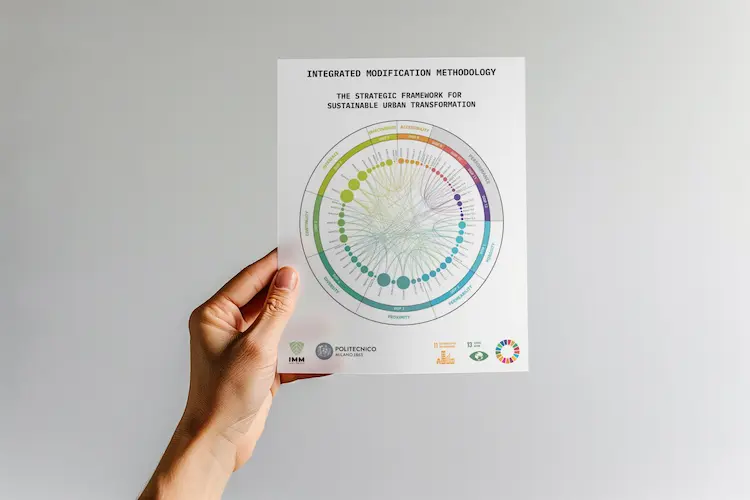
Reframing urban regeneration
Vlorë’s IMM diagnostic revealed a spatial imbalance: urban diversity and accessibility were concentrated along the north–south corridor, from Ismail Qemali Boulevard to the seaside, leaving surrounding areas fragmented and car-dependent. Accessibility analysis also showed a disrupted ecological network, with strong peripheral natural systems but poor urban core connectivity. This highlights a divergence between the city’s ecological and functional systems, limiting its adaptive capacity.
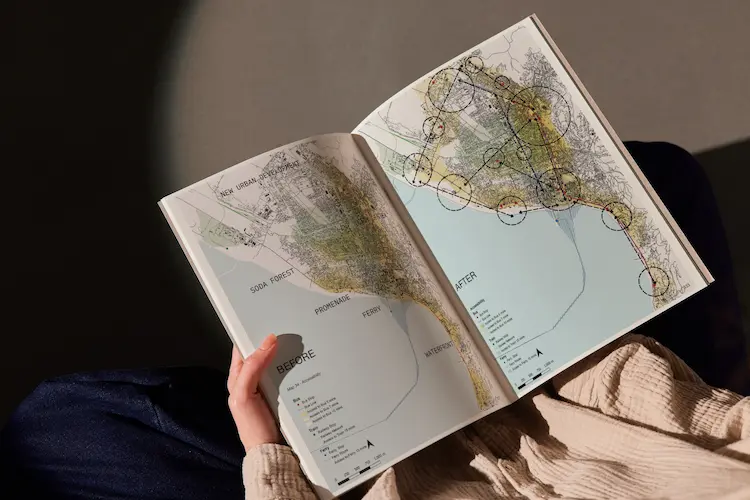
Building on these findings, the analysis extended to Vlorë’s mobility and public transportation systems, pinpointing critical gaps in accessibility and network coherence. To address these issues, new routes were proposed to bridge urban sprawl and reconnect peripheral districts with the central core. These routes would link the Soda Forest, the waterfront promenade, and the historic city center through an integrated system comprising bus stops, transit hubs, and pedestrian corridors.
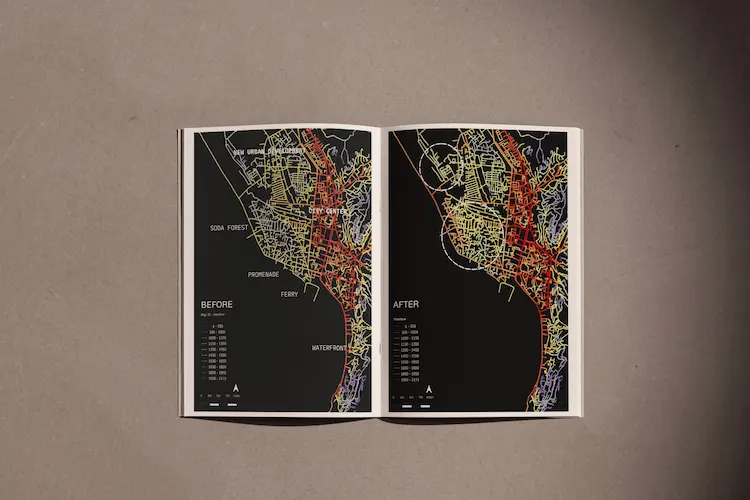
The outcome of these interventions was twofold: enhanced connectivity and reduced car dependency, and to alleviate ecological and social pressures. Ultimately, these initiatives transformed mobility into a catalyst for community regeneration and cohesion throughout the Vlorë territory.
Systems, synergies, and the design of the invisible
The implementation was led by Ecospectrals, translating systemic intelligence into coordinated urban design & action. This involved aligning local governance, environmental agencies, and community initiatives, ensuring that all interventions were mutually reinforcing. In doing so, the work demonstrated how systems thinking can move from theory to territory, transforming analysis into lived regeneration.
This systemic logic shifts the designer’s role from a creator of forms to a mediator of systems, navigating the intricate feedback loops between human intentions and natural intelligence. The methodology’s diagnostic & retrofitting spiral captures this philosophy: learn from the existing metabolism, act through synergy, and allow the system to adapt.
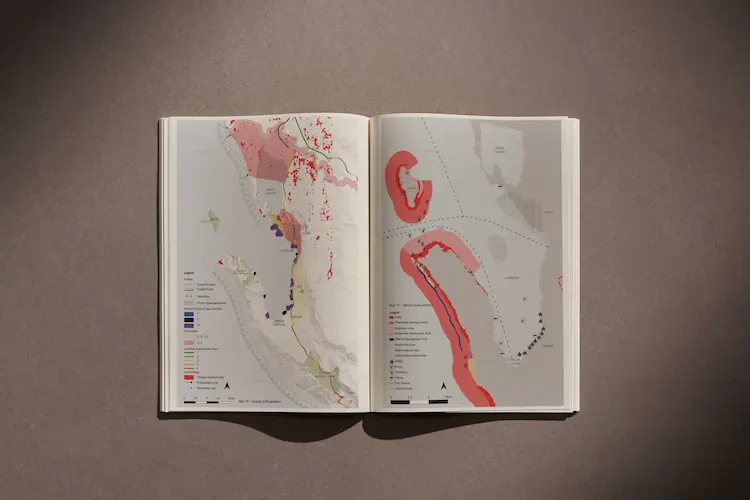
At its heart, the project reframes urban design as the choreography of interdependencies. Ecospectrals connected individual design interventions to their wider ecological, social,economic & tourism, and infrastructural impacts through a framework of interconnected actions. A tree canopy along a street improves walkability, reduces heat, enhances biodiversity, and redefines public life. Each action, however small, becomes a multiplier within the system.
Rather than treating blue–green infrastructure as an aesthetic layer, the Vlorë approach positions it as infrastructure for life. Natural capital, including forests, wetlands, tree cover, and soil carbon is recognized as a form of wealth equal to roads or utilities. Its restoration becomes an act of civic infrastructure.
Translating complexity into clarity
Vlorë’s transformation emerged through a network of institutions, civic actors, and community partnerships under the IADSA program, with the active involvement of the Municipality of Milan and Bashkia Vlorë. Within this collaborative framework, EcoSpectrals Design Lab acted as the connective intelligence in translating systemic analysis into coordinated design & urban action. Working alongside CELIM, AMSA, local NGOs, and the National Agency for Protected Areas through the NaturAlbania, Green coAL-ition, and Blue coAL-ition initiatives, the work bridged governance, ecology, and community practice to restore watersheds, clean coastal zones, and revive the Vjosa–Narta ecosystem.
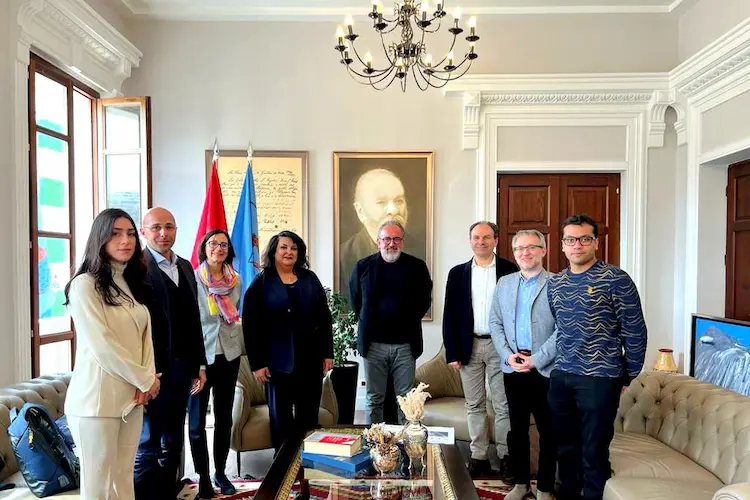
In Vlorë, the convergence of systemic intelligence and community-driven regeneration revealed a deeper truth: cities are not static objects to be redesigned but living systems to be reawakened. Through the alliance of institutions, design, and civic life, a new form of urban practice emerged : one where data, ecology, and human intention align toward shared renewal. What began as an effort to heal a coastline has become a quiet manifesto for how cities everywhere might evolve: by learning to act with their environments, not upon them.
Systemic intelligence in practice
The experience of Vlorë shows that regeneration is not built in concrete but in consciousness. Sustainable urban renewal begins when cities learn to think systemically, when governance, ecology, and human agency align within one adaptive framework. The transformation of places like the Soda Forest Hub reveals that progress happens not through grand projects, but through the quiet repair of relationships: between people and land, data and design, nature and economy.
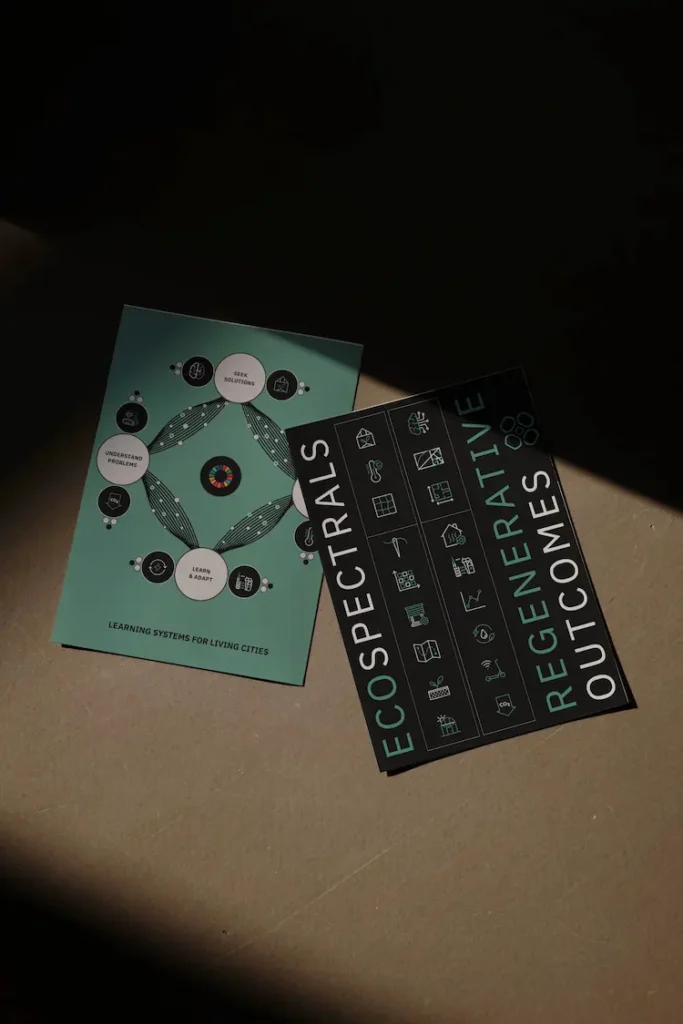
For decision-makers, the lesson is simple:
- Invest in collaboration across municipalities, institutions, and non-profits as resilience grows where disciplines intersect.
- Recognize natural systems as infrastructure, carrying measurable ecological, social, and economic value.
- Think in systems, act in sequences. Move beyond isolated projects toward adaptive frameworks where policies, infrastructures, and ecologies reinforce each other over time. Transformation is not a plan but a learning process.
- Invest in natural and social capital. Treat ecosystems, communities, and data networks as shared infrastructure with measurable value. Every euro spent on restoration or inclusion is an investment in resilience.
- Design for feedback, not permanence. Embed sensing, participation, and data-driven evaluation into every phase of planning. Let the city evolve through evidence, iteration, and collective intelligence.
By translating systemic intelligence into urban renewal, Vlorë demonstrates how coastal cities can lead in shaping the regenerative urban paradigms of the 21st century. It is a city that does not dominate nature, but evolves with it.
Ultimately, Vlorë’s story is about learning to act with complexity rather than against it. Systemic Intelligence transforms regeneration into an ongoing dialogue between people, nature, and design, a living framework that adapts and evolves. The city becomes not a finished project but a continuous practice of renewal.
Read more about smart innovations here and about a big project of urban regeneration in Athens here.
